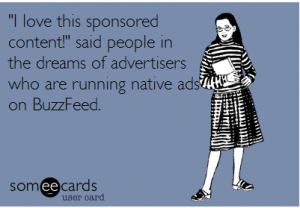“People don’t read ads. They read what interests them, and sometimes it is an ad.” This famous quote from Howard Gossage might sound familiar if you’re in marketing or advertising.
Sidenote: Howard Gossage has the single coolest one-sentence biography I have ever heard, which reads: Howard Luck Gossage, known as “The Socrates of San Francisco,” was an advertising innovator and iconoclast during the “Mad Men” era.
That’s the goal of content marketing — to write and create things that people actually engage with.
Sometimes, marketers attempt content marketing with the goal of leads in mind and they would just as soon pay someone on Fiverr to write an “SEO article” with a certain keyword density, clean it up, slap it on their blog, and call it “content marketing.” Sometimes, those same marketers make claims that content marketing doesn’t work.
Other times, marketers attempt content marketing with the genuine aim to inform and entertain their audience. Ultimately, their goal might be for the benefit of their organization or employer, but oftentimes these marketers are aiming for true engagement because they believe their products and services can change the world. And other times, they are trying to do their jobs the best way they know how without offending the rest of society.
Consumers share a certain ambivalence about both content marketing and native advertising. And marketers know that. It’s the elephant in the room about what we do — how can we market in a truly effective and engaging way to people who aren’t sure how they feel about the tactics brands use to reach them?
For B2B marketers, content marketing can provide an effective way to reach an audience — it costs less than advertising, and more people engage with content over ads.
The hard part of content marketing? Getting people to see your content.
B2B content marketers know that creating engaging content is really difficult and the noise from your competitors is only getting louder.
So while content marketing has a slightly higher reputation between the two — content marketing and native advertising go hand-in-hand. They support each other.
Native advertising needs great content. Great content needs eyeballs.
No matter what, one thing stays the same: Marketing practices are only as good as the marketers who utilize them.
It’s true about email marketing — which can either leave consumers feeling valued or abused … it’s true about rich media ads, blogging, etc.
Now it’s up to us as marketers to ensure that digital native advertising has a chance to survive and thrive. Let’s agree to learn to navigate this frontier without screwing it up for all marketers.




